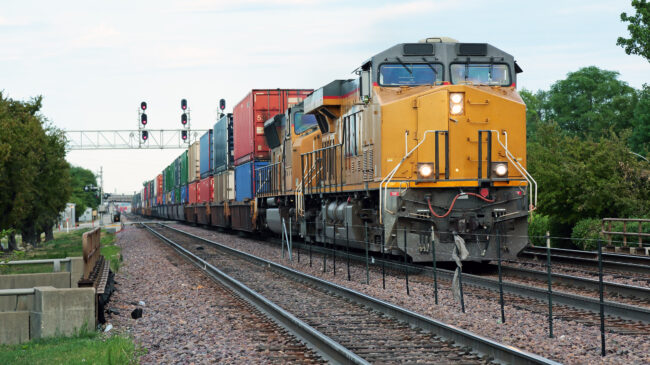During the past decade, federal and state policymakers have pursued minimum crew-size rules for railroads operating in their jurisdictions. Despite the appeals to safety made by proponents of these regulations, the available evidence does not support these claims. In addition, imposing crew-size minimums on economic grounds is likely to backfire by reducing the competitiveness and long-term viability of rail in the broader transportation sector.
In 2016, the Federal Railroad Administration (FRA) proposed a rule that would have required trains operating on the national rail network to be staffed by at least two crewmembers unless railroads successfully petitioned for a special exemption to operate a train with fewer than two crewmembers. FRA’s notice of proposed rulemaking conceded that “FRA cannot provide reliable or conclusive statistical data to suggest whether one-person crew operations are generally safer or less safe than multiple-person crew operations.”
This admission of FRA’s lack of data to support its proposed rule did not originate from FRA. Rather, it came from the White House Office of Management and Budget’s Office of Information and Regulatory Affairs (OIRA), which is the executive branch’s regulatory watchdog. The draft notice of proposed rulemaking that FRA originally sent to OIRA for review instead claimed, “Studies show that one-person train operations pose increased risks by potentially overloading the sole crew member with tasks.”
Despite OIRA’s efforts to correct the Federal Railroad Administration’s significant errors, the general conclusion that FRA was attempting to act in the absence of safety evidence led to the notice of proposed rulemaking’s subsequent withdrawal by FRA in 2019. While this debate played out at the federal level, a number of states have attempted to impose their own minimum crew-size laws. These state laws are currently being challenged.
Like the safety basis for minimum train crew-size regulations, the economic rationale is similarly unsupported. Railroad employee unions that promote these laws have two primary motivations. First, the unions fear that train automation technologies will, over time, replace their dues-paying members. Second, they’d like to have a government edict replace a matter that is normally subject to collective bargaining negotiations between the union and railroad management. On the latter, it is quite rational for unions to lobby for government favoritism in labor-management relations. But on the former, forcing railroads to shoulder above-market labor costs in perpetuity is likely to ultimately backfire on union members by reducing rail’s long-term competitiveness.
Freight rail competes with over-the-road trucking. While rail can offer a number of advantages over truck competitors, especially for bulk commodity traffic, trucking dominates surface transportation cargo movements and this dominance is growing. Comparing the 2012 and 2017 editions of the Commodity Flow Survey shows that trucking enjoyed a 6.4 percent traffic increase to 1.3 trillion annual ton-miles moved while freight rail saw a 31.9 percent decline to 824.8 billion annual ton-miles moved.
This divergence occurred at a time when the railroad industry was implementing a multibillion-dollar unfunded mandate from a 2008 federal law to install positive train control, which refers to a suite of communication and automation technologies aimed at improving safety. The trucking industry is currently investing in automation technologies to improve safety and reduce labor costs. If the trucking industry successfully automates its operations while railroads are saddled with inflexible crew-size regulations, rail’s competitiveness will continue to fall relative to trucks. This would inevitably lead to a smaller railroad workforce and fewer dues-paying union members.
One other area policymakers may wish to consider is the environmental impact of competing transportation modes. While trucking emits far more greenhouse gas emissions than rail, in part owing to its greater share of total freight traffic, trucking also emits approximately seven times as much carbon dioxide per ton-mile as rail. Thus, disadvantaging rail relative to trucking through a train crew-size mandate would increase the transportation sector’s emissions intensity.
Instead of pursuing an anti-innovation agenda built on dubious safety claims, policymakers should instead seek to eliminate unnecessary regulatory burdens and distortionary subsidies across all modes of freight transportation.

